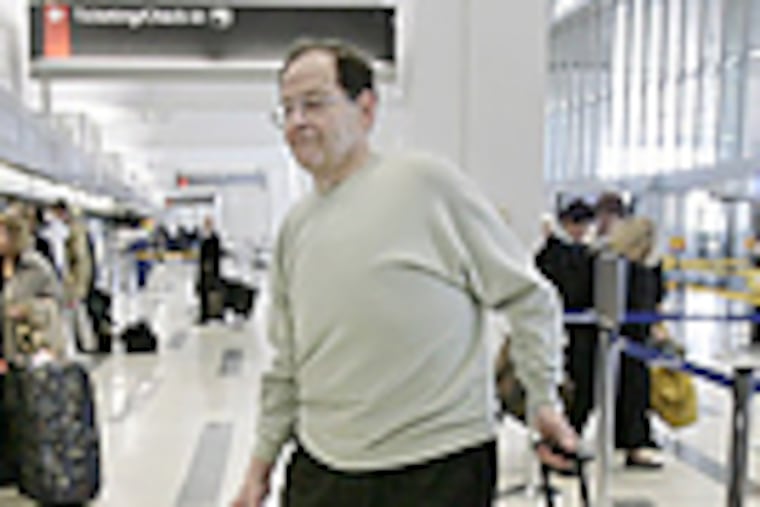Winging It: Rising satisfaction with airport? Look to US Airways' improvements
The folks who run Philadelphia International Airport were overjoyed last week when J.D. Powers & Associates announced that the airport ranked first in its 2008 survey of overall satisfaction among large airports. The rest of us, me included, were simply stunned.

The folks who run Philadelphia International Airport were overjoyed last week when J.D. Powers & Associates announced that the airport ranked first in its 2008 survey of overall satisfaction among large airports. The rest of us, me included, were simply stunned.
The airport moved up five spots from last year and did especially well in terminal facilities and baggage claim. (See the results at www.jdpower.com.)
On philly.com, where reader comments aren't screened for good taste or common sense, some people alleged that the airport bought off the rating service. Most simply said words to the effect of "What? Are you crazy? Don't you know Philadelphia has the world's worst airport?"
I wondered if one airline's or airport's employees or friends could skew the Internet survey with heavy voting.
But talking to Jim Gaz, the company's senior director of travel and entertainment, I learned how difficult and unlikely that would be.
J.D. Power has more than a million households in its online database. To do airline and airport rankings, it carefully screens for people who have traveled in the last month and asks what carriers and air routes they have used in the last year. Among those who had used large airports, 868 had come through Philadelphia, a healthy sample size.
The Philly group took an average of four leisure trips and five business trips in the previous 12 months, which makes them more-frequent fliers than most people and comparable to all the travelers surveyed.
To be clear, the results show customers aren't particularly happy with any of the nation's 19 biggest airports. And there is not much difference between the scores for No. 1 and No. 19. Philadelphia had 690 on a 1,000-point scale, followed by Las Vegas and Orlando at 688. Minneapolis/St. Paul finished last in the big-airport group, with a score of 647.
Medium-sized airports with 10 million to 30 million passengers a year, and small ones with fewer than 10 million, had scores that were only slightly better.
Even so, how did Philadelphia climb so many rungs in a year? Perhaps the weather was better here, reducing flight delays.
In fact, the most logical reason is the obvious one: US Airways really did improve its operation.
US Airways' executives, 2,000 miles away in Arizona, realized sometime in 2007 - two years after taking charge - that they needed better management and more resources at their key international hub, where they carry two-thirds of the customers. The airline trimmed its flight schedule, which helped its own and overall airport on-time performance.
Compared with a year ago, the number of lost or damaged bags has gone down, along with complaints filed with the U.S. Department of Transportation.
Likewise, the number of horror stories reported to me on the blog or in separate e-mails and phone calls dropped sharply, starting last fall. There's virtually no comment on the J.D. Power rankings on our blog (http://go.philly.com/wing), which tends to be the province of frequent business travelers. There's no way to know how often those commenting on the initial news actually use the airport.
In the last year or two, I have flown to, from or through hubs in Atlanta, Baltimore, Cincinnati, Chicago Midway and O'Hare, Dallas Love Field and Dallas/Fort Worth, Houston Hobby and Intercontinental, Las Vegas, Newark, Philadelphia and Phoenix. In past years, I have used all of the 19 largest airports, and 25 of the 41 medium-sized and small airports.
My opinion of each airport was influenced by how smoothly I was able to get in or out or change planes, a measure affected by the weather as much as anything else. The only discernible difference in the service at the airports recently was how employees of my airline behaved.
I have the best impressions of airports with newer terminals, which tend to have wide concourses, high ceilings and lots of natural light coming through large windows or skylights. That makes it all the more notable that US Airways improved in Philadelphia, with a basic terminal layout designed 40 years ago.